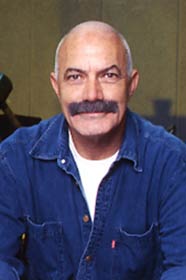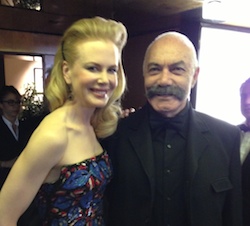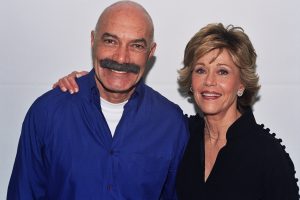




Personal film projects, about which directors feel passionate, do not necessarily result in good or interesting films as is clear with Donaldson’s “The World’s Fastest Indian.”
For Donaldson, the making of this road movie represents the culmination of a dream he has held for 30 years. As a young filmmaker, working on the documentary “Offerings to the God of Speed,” Donaldson met a local Invercargill man with a remarkably inspirational story. The quintessential New Zealander, named Burt Munro, was born and raised in Invercargill, New Zealand, where he dreamed of making his 1920 Indian Twin Scout the fastest bike on earth.
This is the second teaming of Anthony Hopkins and Donaldson, who had first worked together 21 years ago, on the third remake of “The Bounty,” starring Mel Gibson.
Hopkins stars as Burt Munro, a man who never let the dreams of youth fade. After a lifetime of perfecting his classic Indian motorcycle, Burt set off from the bottom of the world to test his bike at the Bonneville Salt Flats in Utah. With all odds against him, Burt set a new speed record and captured the spirit of his times. Burt Munro’s 1967 world record remains unbroken and his legend lives on today.
Shot in the white sands of Bonneville, Utah and the wind swept shores of Oreti Beach in Invercargill, New Zealand, “World’s Fastest Indian” is visually compelling, but thematically and tonally it’s flawed. Unabashedly sentimental, and in moments even schmaltzy, it’s hard to get involved in the story, which, despite positive message, is not particularly intriguing.
Hopkins plays his eccentric and lovable character with tact and intelligence, and surprisingly, he doesn’t overact. Hopkins captures Munro with all his power, his determination, his creativity, his charm, his eccentricity, told through the eyes of a director who knew and liked the man personally.
Based on Burt Munro’s journeys to Bonneville during the 1960s, the film follows the road to fulfilling a dream and the magic in the true story of a man who believed, “If it’s hard, work harder; if it’s impossible, work harder still. Give it whatever it takes, but do it.”
Crazy ol’ Kiwi coot Burt Munro lives in a New Zealand shed, playing with his 1920 Indian Scout motorcycle, a vintage mechanical steed that looks like a red rocket and has no brakes; it’s constructed from spare parts. An eccentric, early on, Burt is reprimanded by a neighbor for not mowing his overgrown lawn, mocked by young bikers for being old, and condescended to by a local banker upon applying for a mortgage. However, although burdened by a faulty hearing, he fights financial and health hurdles on his long-dreamed-of journey to Utah’s famed Bonneville Speedway to try and break the land speed record.
As expected from road pictures, along the way, Burt encounters an assortment of good and generous people, including a cross-dresser, a friendly used-car salesman, and a Native American with a distasteful cure for Burt’s urination problems. Also as expected, Burt reveals himself to be a “philosopher,” who chastises smokers with statements like, “I always figured a man is like a blade of grass,” or “the reward is in the doing of it.” Looking and behaving like a benevolent grandfather, Hopkins’ Burt has charm and wisdom to spare, even when he I not asked for.
Uncharacteristically, Donaldson, usually a subtler director, employs a manipulative approach, milking the potential emotions in every encounter. Hence we get to see Burt’s tender relationship with his neighbors’ admiring young son to his sexual affairs with women, and also how he overcomes all kinds of obstacles in his path, such as a rattlesnake attack, car crash, and rigid and callous administrators.
Burdened by dramatic flaws, sentimentalism, and overbearingly hopeful fairy-tale tone, “The World’s Fastest Indian,” despite impressive visuals, feels like TV Movie of the Week.
Well-cast Hopkins makes the story watchable, if not really enjoyable. This role and his acting are certainly more interesting than his disappointing performances in “The Human Stain,” “Alexander,” and “Proof.” With a convincing accent, charming smile and obsessive determination, he keeps the story going even when it runs out of steam and ideas (in the second half).
It’s hard to think of another filmmaker who’s had a more erratic or checkered career than Roger Donaldson’s. Among his credits, you’ll find The Recruit, Thirteen Days, Dante’s Peak, Species, The Getaway, White Sands, Cadillac Man, Cocktail, No Way Out, The Bounty, and other. Even so, I am still partial to Donaldson’s “Smash Palace,” the most painful and touching screen portraiture of divorce I have seen.










